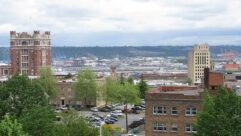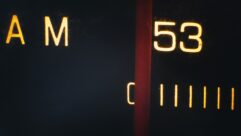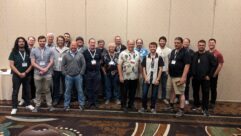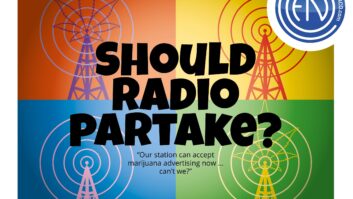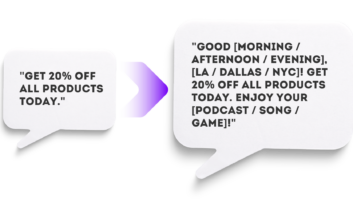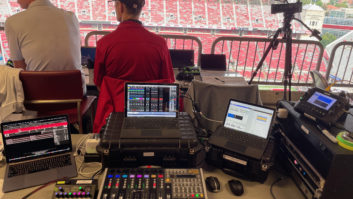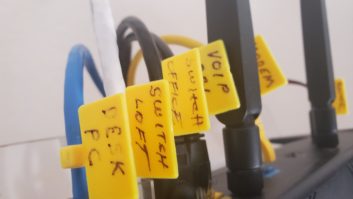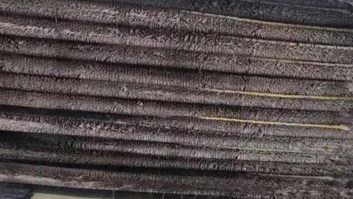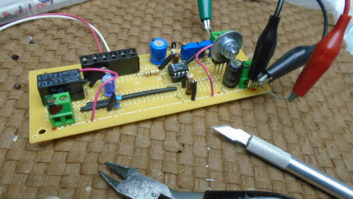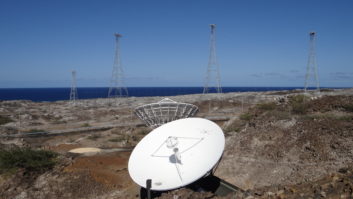
So how was the NAB Show? I asked several exhibitors for their perspectives. They were not in full accord on every detail; but most I talked to were upbeat.
Mike Troje, sales manager for Continental Electronics, saw it as a “glass half-full/half-empty experience.”
“While every exhibitor knew in advance that attendance was going to be down from previous years, nobody knew what the final tally would be [and] more importantly to us at Continental, what the mix of domestic and international visitors would be,” he said.
“Frankly, we were uncertain if our international visitors would offset the anticipated reduction in domestic visitors or if that group would decline as well. I was quietly hoping for an increase in international traffic and sometimes you get what you wish for.
“While our domestic booth traffic was down by nearly 40 percent, our overall traffic was only down by 15 percent. This translates into a significant increase in international traffic, most of which came from Central and South America.
“All in all, considering a global economic recession, the expanding global digital radio marketplace is still very enthusiastic about the future of both HD Radio and DRM, so I am very pleased with these numbers.”

Owen Ulmer of Sabre Towers, right, shows his company’s portfolio to Greg Burbage of 4SE. (Photo by Bob Kovacs) But Mike has a wish for future conventions.
“Even with reduced attendance, the NAB Show remains the best place to meet new customers and refresh existing relationships. That being said, I would like to see the NAB focus on attracting more international attendees. The NAB experience needs to be a global event, not just a conference and exhibits focused on broadcasters in North American and the Western Hemisphere. The potential benefit to U.S.-based manufacturers, like Continental, is obvious.”
Digital dropoff?
Kent Koselke, the sales and marketing manager for Crown Broadcast IREC, thought the show was “pretty interesting.”
“The easiest comment is how slow the show was in the North Hall, but the silver lining to that was it afforded us much more time to spend with the people who did come to the booth.
“We were allowed to have detailed conversations, which allowed us to much better identify and solve customers’ needs. In fact analysis of the pass-through metrics indicates that this year was actually better than the last two years regarding people who were looking to purchase equipment.
“In past years there was always a lot of talk about HD Radio, this year almost no conversation about HD Radio (at least what is fit to print in Radio World),” he continued.
“Broadcasters in smaller to medium-sized markets tended to be much more optimistic than their big-city counterparts and many of these small to medium broadcasters will be buying equipment this year. The NAB Show is still the best opportunity to see your distributors and customers, so for that alone it is worth the effort.”
‘Worthwhile’
Martyn Gregory is vice president for Shively Labs.
“We had generally expected a very slow show, based largely upon the price war being waged by the hotels — which suggested that they were substantially under-booked compared to previous years — and comments from various customers that people were attending on their own nickel.
“Similarly, perennial customers and visitors from Europe, including former colleagues of mine, did not attend, focusing instead on IBC in September; but the South and Central American markets were well represented.
“When the show actually opened, we saw consistent, genuine traffic Monday and Tuesday, with better-than-expected booth activity on Wednesday too.
“All in all, it was a worthwhile and productive NAB,” Gregory concluded.
Meantime, I heard this from Gillian Wylie of APT Codecs, which is now part of the Audemat Group.
“I have managed to work through all the leads received from our booth and thought you might be interested in some of the results,” she said. “I know we were all sick of the ‘quality vs. quantity’ line by the end of the show but the results actually bore it out.
“Overall visitors to the booth were well down, 20 to 30 percent less than 2008; but when I calculated the total number of opportunities discussed, it came out at exactly the same amount as last year,” she continued. “It seemed that companies sent fewer people to the show as a cost-cutting exercise but that the projects are still there and there is still budget to be spent.
“The other notable trend from our perspective was that it was the European and Asian visitors who dropped off most notably, but this was compensated by an increase in interest from the U.S. and Latin America. This year approximately 75 percent of the opportunities that we identified at the show came from the Americas (North and South) whereas last year, this figure was closer to 40 percent.” She called it a successful show for the launch of the company’s new codec platforms.
This may all seem like “insider trading” if you aren’t an equipment manufacturer. But the topic is important given the role that the NAB Show plays in our industry and if you believe, as I do, that a healthy equipment marketplace is vital to our industry.
The above sentiments seem fairly representative of what I heard from vendors.
My own view though, as a former booth manager and sales executive, is that the radio floor has become worryingly quiet and smaller; and really you could shop it in two days. The radio portion of the NAB floor certainly would not support a four-day show if there weren’t a much bigger convention going on around it.
Probably the most common remark I heard from vendors was, “It’s refreshing to have no ‘tire-kickers.’” This sentiment troubles me. I don’t recall a company ever complaining in the past about too many tire-kickers; and I suspect salespeople would rather have a crowded booth with both qualified prospects as well as those just looking for next year.
And if show after show, the “quantity is down but the quality is high,” at what point is a company spending a great deal of money to meet a mere handful of buyers they might go visit in person? These are questions worth considering. Obviously many suppliers feel differently and demonstrate that with their continued investment.
What did you think? Tell me, or comment under the appropriate topic in the Radio World forum at radioworld.com.
